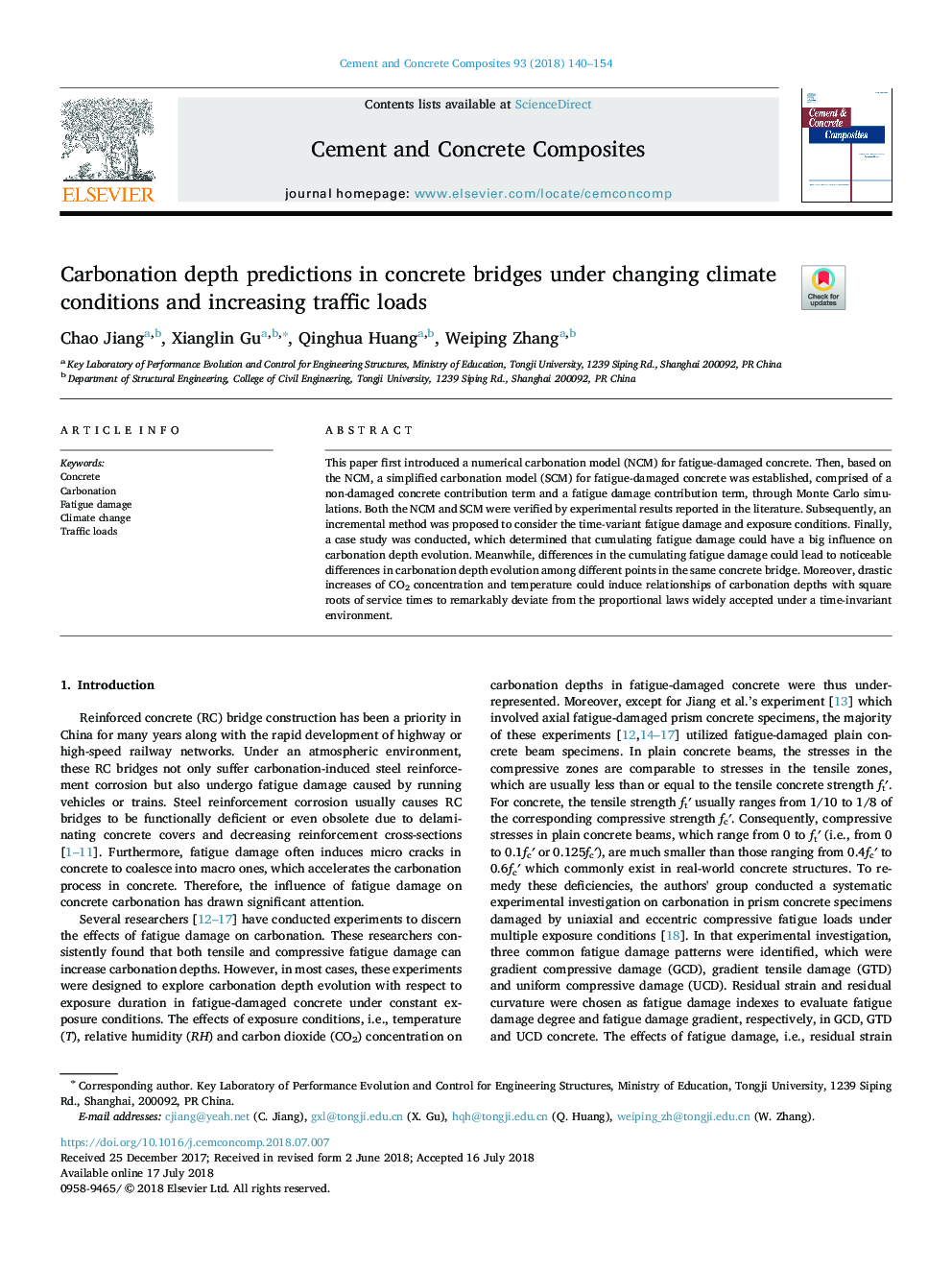| Article ID | Journal | Published Year | Pages | File Type |
|---|---|---|---|---|
| 7883415 | Cement and Concrete Composites | 2018 | 15 Pages |
Abstract
This paper first introduced a numerical carbonation model (NCM) for fatigue-damaged concrete. Then, based on the NCM, a simplified carbonation model (SCM) for fatigue-damaged concrete was established, comprised of a non-damaged concrete contribution term and a fatigue damage contribution term, through Monte Carlo simulations. Both the NCM and SCM were verified by experimental results reported in the literature. Subsequently, an incremental method was proposed to consider the time-variant fatigue damage and exposure conditions. Finally, a case study was conducted, which determined that cumulating fatigue damage could have a big influence on carbonation depth evolution. Meanwhile, differences in the cumulating fatigue damage could lead to noticeable differences in carbonation depth evolution among different points in the same concrete bridge. Moreover, drastic increases of CO2 concentration and temperature could induce relationships of carbonation depths with square roots of service times to remarkably deviate from the proportional laws widely accepted under a time-invariant environment.
Related Topics
Physical Sciences and Engineering
Engineering
Industrial and Manufacturing Engineering
Authors
Chao Jiang, Xianglin Gu, Qinghua Huang, Weiping Zhang,
